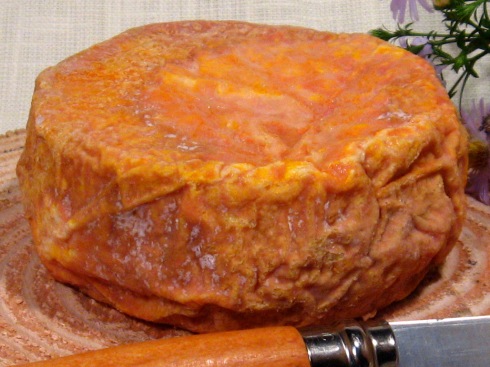
From a gustative point of view:
The superficial rind of hard cooked pressed cheeses such as Comté offers little interest. By contrast, many connaisseurs are very fond of the darkest and driest part under the rind as it reveals strong toasted and woody aromas.
Some soft cheeses with a washed rind like Époisses de Bourgogne do not really have a rind but a thin orange skin almost indissociable from the rest of the cheese. The punchiest aromas develop on that thin skin, the heart of the cheese alone remains rather lactic. In this case, rind and pate eaten together will balance each other in mouth, both in texture and flavour.
Other cheeses with a rather thick grey brown rind like Saint Nectaire or some Tommes are very appreciated for a pronounced taste of ground and underwood giving the cheeses all their character.
As for soft cheeses with white bloom, the Penicillium that coats them, reveals in mouth mushroom perfumes, as well as underwood and smells of farmyard typical of those cheeses. A Camembert De Normandie without its rind is no longer a real Camembert de Normandie!
Most blue cheeses do not have a rind as their making process inhibits it.
Some cheeses are waxed for maturation purpose, the wax should be removed, you knew that i am sure, but i had to mention it!
When making your cheese platter make sure you give as much rind as pate to your guests, the rind is often the best way to identify a cheese and doing so your guest may choose whether to eat the rind or not?
On a Food Safety point of view:
Artisan cheeses are equally as safe ( probably safer ) as any modern pasteurized foods providing obviously they are being looked after in a Food Safe manner. The rind in whichever case will harbour the highest microbiological count, including pathogens if there are any. Those pathogens might well go unnoticed if you are a healthy individual but they may cause havoc with some of you with a weakened immune system.
Recommendations:
If you’re in a high risk group, if you’re pregnant or if you have a weakened immune system (children, elderly, sick, … ) you should be mindful eating some foods, soft cheeses have a higher water activity which may encourage pathogens proliferation, or survival, i usually encourage my pregnant ladies to eat some hard cheese, made from unpasteurized or pasteurized milk doesn’t make any difference, the food safety criteria are the same for both at the start of making, most contmainations occur post-production so have a look at your cheese monger’ s handling practices, if he does not work in a safe manner, you might want forget about it!